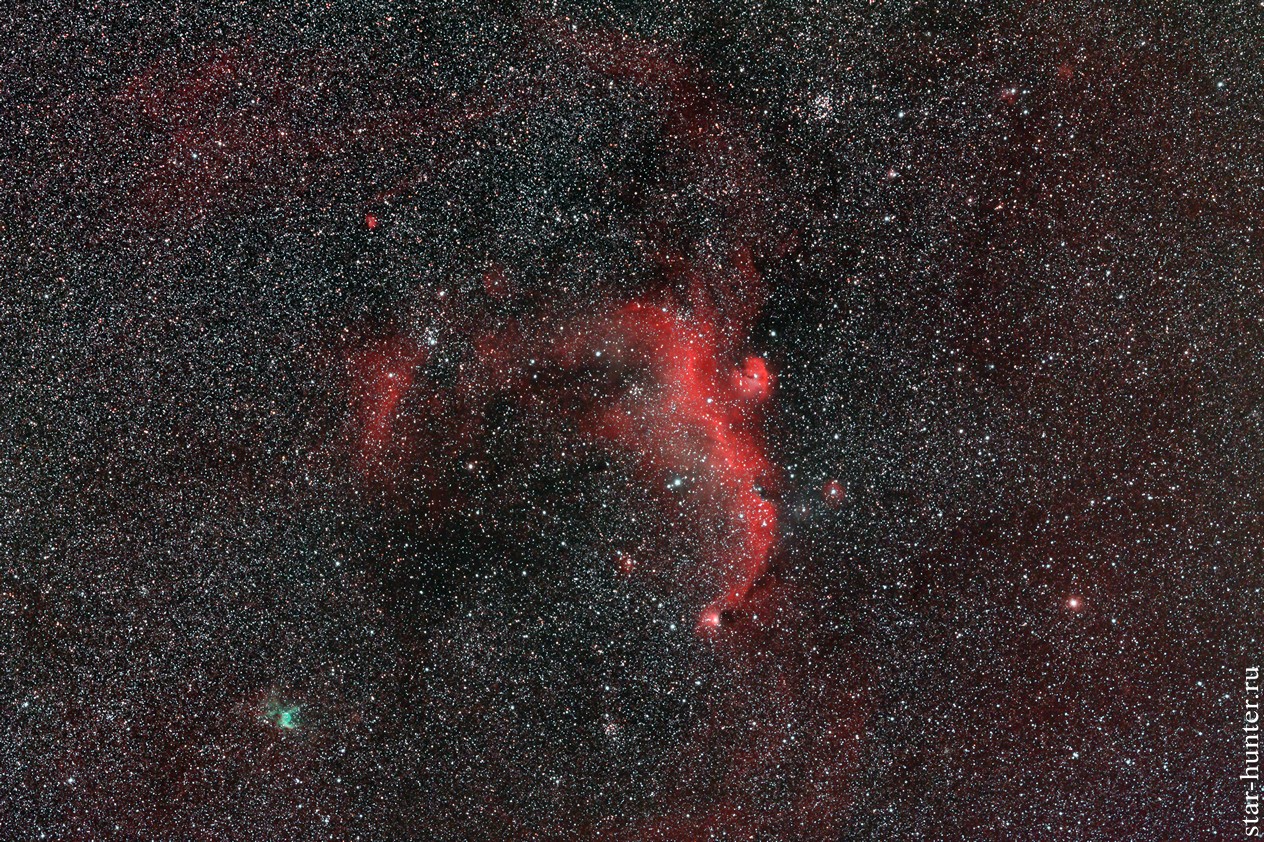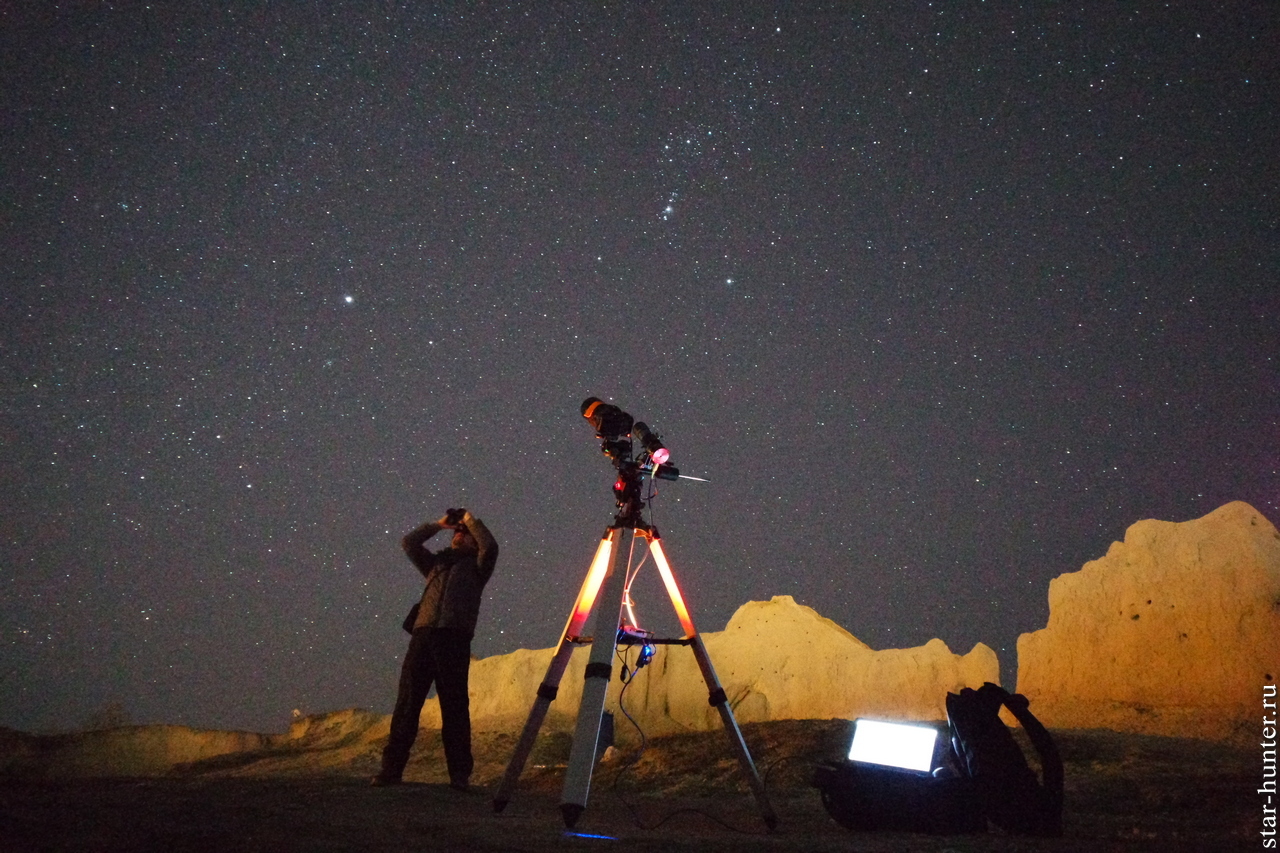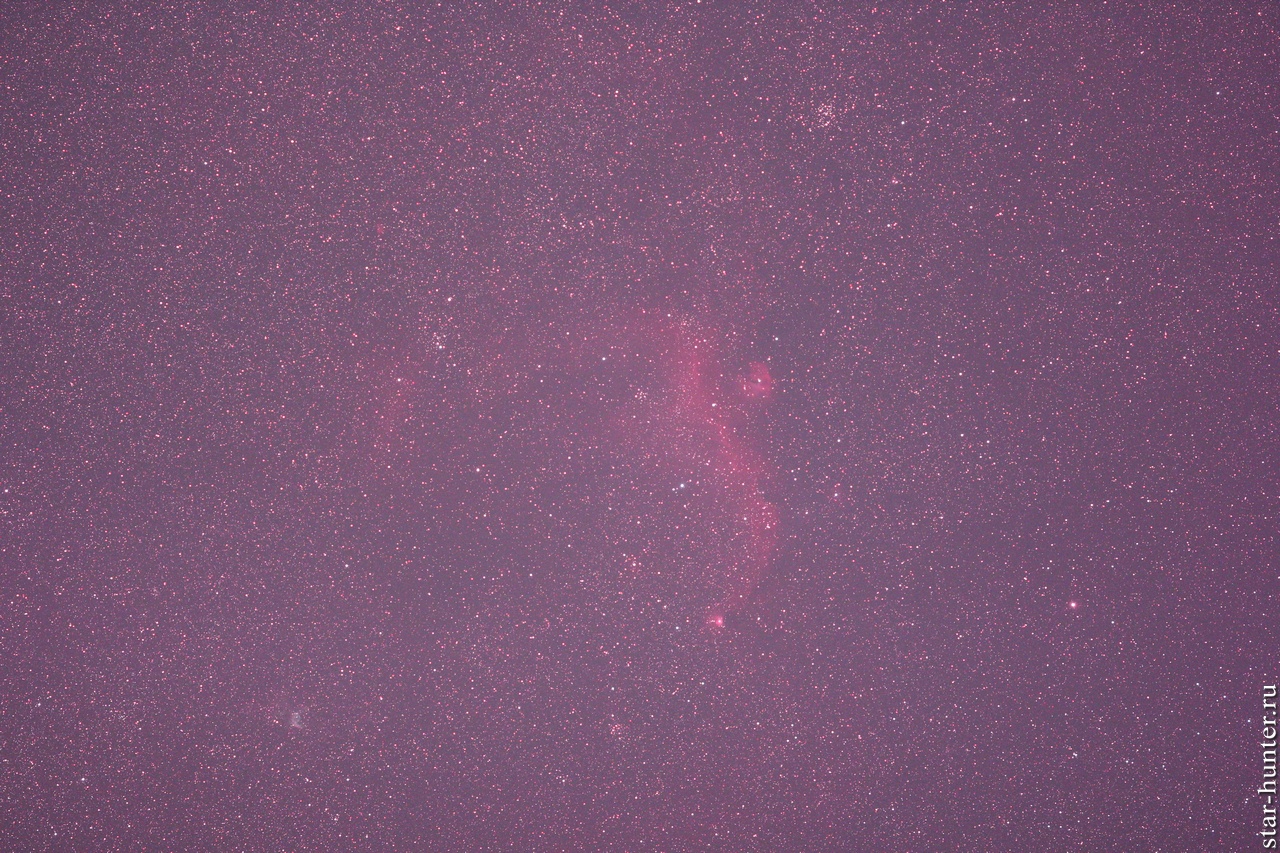I managed to shoot the Seagull nebula in the constellation Monoceros 5 times. Literally before the shooting, the weather deteriorated and the whole sky was overcast with clouds. Several trips out of town were wasted because of the clouds. On February 5, 2019, the weather still took pity on me and was able to fully capture this interesting area of ionized hydrogen. Below and to the left of it is the Thor’s Helmet nebula in the constellation Canis Major, which got its name for its resemblance to the winged helmet of the Scandinavian thunder god. The departure was very successful, there were only a few clouds at the very beginning, while I set up the autoguider and searched for the nebula. There was wind, but the rocks were well protected from the it.

Equipment:
-Samyang 135\2.0 ED Canon EF lens
-camera Canon 550Da
-filter Svbony CLS clip EOS-C
-mount Sky-Watcher Adventurer
-autoguider: finderscope Sky-Watcher 50 mm + camera ZWO 290 MC.
35 frames per 120 s, ISO 1600.
Calibration with PIPP, stacking with Fitswork.
Scale 25%. Link — at scale 100%.
Location: village Supsekh, Kuban, Russian Federation.
There were great difficulties due to red halos – the result of using a CLS filter with a modified Canon 550Da camera. When shooting without a CLS filter, they practically do not interfere, but due to the noticeable light pollution, I still had to use this accessory. The filter does not transmit light between the red and green ranges of the spectrum, which leads to a choice in focusing – either in the red channel or in the green. It is possible that using a more advanced L-Pro type filter will improve the situation. A compromise is possible – focusing between the red and green channels, but this will lead to a decrease in resolution. Perhaps next time I will try this kind of focus. The problem itself lies in the photo-lens – undematured chromatism and spherical aberration in the red channel.
We managed to weaken a few halos in the Fitswork program using the Make Stars Smaller function — we decompose the image into channels (Processing> Sptil Color Image to 3 B / W Images), then select the red channel and reduce the size of stars (Processing> Sharpen Filter> Make Stars Smaller) . In the red channel, there is a strong defocusing, therefore one should not expect clear details, and the stars look like circles.
I compared the calibration in DeepSkyStacker and in PIPP – the result was almost the same. Frame addition and background alignment was done in the Fitswork program, however, additional alignment of the background in IRIS was required.
Example of single frame (internal JPEG):
Capturing:

